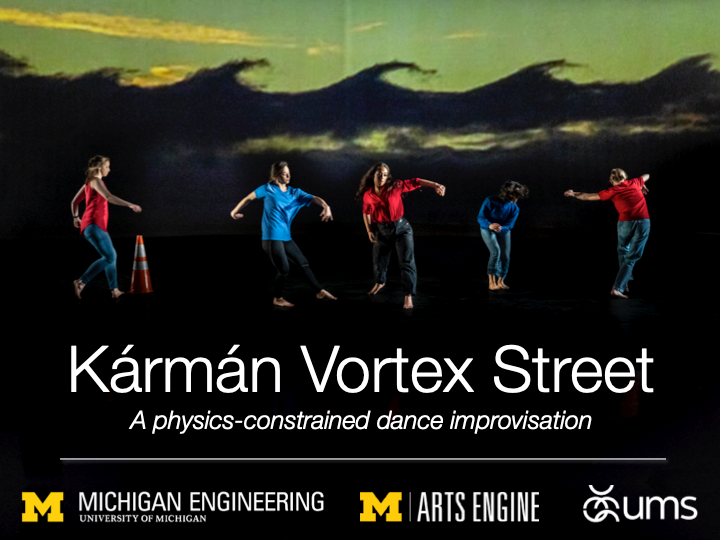“Social dances, such as tango, have a collection of rules that maintain structure, both collectively among all dancers and individually between pairs of dancers, that enable a coherent flow,” said Capecelatro. “Examples include the specific connection and embrace between dancers, maintaining a line of dance, establishing an axis of rotation during turns, and so on. A similar set of rules exists in fluid mechanics.”
Capecelatro will discuss what makes dance and mechanics such an unlikely but complementary pair at the Washington State Convention Center in Seattle at 8:39 a.m. in Room 611 on Monday, Nov. 25. The talk, “Conveying principles of fluid mechanics … through dance,” is a part of the American Physical Society’s Division of Fluid Dynamics 72nd Annual Meeting, which is one of the largest gatherings in the world for fluid dynamics.
Merging physics and choreography was tricky. Capelcelatro said he spent time teaching basic principles in fluid mechanics to the dancers.
“The difficulty comes in attempting to simultaneously capture the relevant physics while keeping the dance interesting and aesthetic to watch,” he said. “In the end, we produced a ‘physics-constrained improvisation,’ in which Veronica had complete freedom over the structure of the dance as long as a certain set of ‘rules’ I provided were met.”
Though the collaboration is still in its early stages, Capecelatro will also discuss how they plan to assess Kármán Vortex Street’s impact on students understanding of fluid mechanics.
“The dance was filmed last winter, and I am currently working with a videographer at the University of Michigan to put it all together,” said Capecelatro. “The goal is to produce a 5-8 minute educational video that demonstrates flow past a cylinder at varying Reynolds numbers through dance. The video will be available to the larger fluid dynamics community to use in the classroom.”
———————– MORE MEETING INFORMATION ———————–
USEFUL LINKS
Main meeting website: https://www.apsdfd2019.org/
Meeting technical program: http://meetings.aps.org/Meeting/DFD19/Content/3770
Invited talks: http://meetings.aps.org/Meeting/DFD19/APS_Invited
Hotel information: https://www.apsdfd2019.org/hotels
GALLERY OF FLUID DYNAMICS
At the Annual Meeting, The Gallery of Fluid Motion will consist of posters and videos submitted by attendees illustrating the science and beauty of fluid motion. More information can be found here: https://www.apsdfd2019.org/gallery-of-fluid-motion
PRESS REGISTRATION
We will grant free registration to credentialed journalists and professional freelance journalists. If you are a reporter and would like to attend, contact [email protected]. We can also help with setting up interviews and obtaining images, sound clips or background information.
LIVE MEDIA WEBCAST
A press briefing featuring a selection of newsworthy research will be webcast live from the conference on Monday, Nov. 25. Times and topics to be announced. Members of the media should register in advance at https://webcast.apswebcasting.com/go/aps-nov25-19.
ABOUT DFD
The Division of Fluid Dynamics of the American Physical Society, established in 1947, exists for the advancement and diffusion of knowledge of the physics of fluids with special emphasis on the dynamical theories of the liquid, plastic and gaseous states of matter under all conditions of temperature and pressure. For more information about DFD, visit https://www.aps.org/units/dfd/.
ABOUT APS
The American Physical Society (APS) is a nonprofit membership organization working to advance and diffuse the knowledge of physics through its outstanding research journals, scientific meetings, and education, outreach, advocacy, and international activities. APS represents over 55,000 members, including physicists in academia, national laboratories, and industry in the United States and throughout the world. For more information about APS, visit https://www.aps.org/.
Original post https://alertarticles.info


